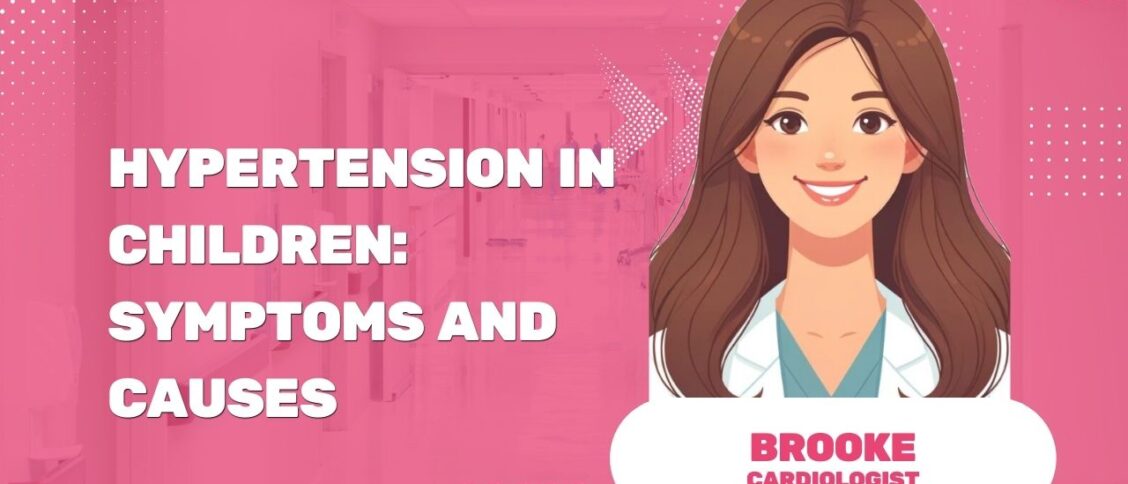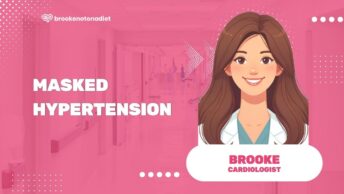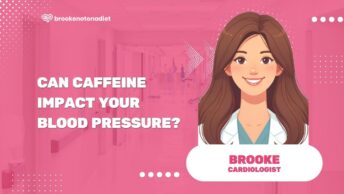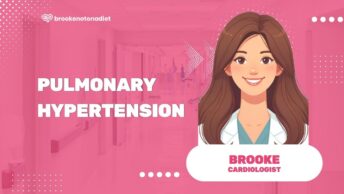Hypertension isn’t just an adult concern anymore. Nowadays, it’s making its way into the lives of our children, too. With lifestyle changes and increased screen time, the incidence of high blood pressure in children is on the rise.
In this article, I’ll be shedding light on the causes, symptoms, and potential long-term effects of hypertension in children. We’ll also take a closer look at how to prevent it and manage it effectively.
So, if you’re a parent or a caregiver, stay tuned. It’s time to arm ourselves with the knowledge to safeguard our kids’ health against this silent threat.
What is normal blood pressure for infant, toddler, preschooler, child, and adolescent?
It’s crucial for parents and caregivers to understand what would be considered normal blood pressure for children. It may change as they age and grow, but having a standard reference range can help identify potential issues early.
Pediatric Blood Pressure Chart
Pediatric blood pressure ranges differ based on a child’s age, sex, and height percentile. For easy understanding, let’s dissect it stage by stage:
Infant (Newborn to 1 year)
- Systolic: 45 – 90 mmHg
- Diastolic: 30 – 50 mmHg
Toddler (1 to 2 years)
- Systolic: 80 – 114 mmHg
- Diastolic: 38 – 75 mmHg
Preschooler (3 to 5 years)
- Systolic: 82 – 110 mmHg
- Diastolic: 44 – 75 mmHg
Child (6 to 9 years)
- Systolic: 85 – 122 mmHg
- Diastolic: 50 – 78 mmHg
Adolescent (10 to 18 years)
- Systolic: 105 – 135 mmHg
- Diastolic: 60 – 86 mmHg
These ranges provide a standard set of values for understanding the health of the circulatory system.
What is Considered High Blood Pressure for a Child?
Irrespective of age, high blood pressure, or hypertension, is usually diagnosed when a child’s blood pressure is higher than that of 95 of children of the same age, sex and height. High blood pressure in children affects approximately 3-4 of children and adolescents, and this number continues to rise.
Using a blood pressure monitor regularly helps keep tabs on your child’s health. If blood pressure levels consistently fall within or cross the upper limit of the ranges mentioned above, it’s time to consult a health professional. Early detection and careful checking of blood pressure are key to managing and lowering blood pressure, thereby preventing long-term health damage. Don’t hesitate to get started – understanding these basics can truly be a lifesaver for your child.
What are the symptoms of high blood pressure in children?
Unveiling the symptoms of high blood pressure in children can often be a perplexing task. It’s critical to realize that high blood pressure often bears no apparent symptoms in youngsters; making it a silent foe. For that reason, it’s essential to resort to consistent blood pressure monitor checks.
Just like the elusive whisper of a shady sycamore in a quiet afternoon, childhood hypertension can remain largely undetected. However, when it does make its presence knwon, it’s generally through a series of various signs. To make it easy for you, I’ve summed up some of the most common symptoms in the following table:
| Frequent Symptoms of High Blood Pressure | Rare but Possible Symptoms |
|---|---|
| Headache | Lethargy or fatigue |
| Dizziness | Blurred vision |
| Chest pain | Mood changes |
| Shortness of breath | Bell’s palsy |
I must reiterate, these symptoms are rare and might be a sign of severe hypertension requiring immediate medical attention. It can’t be overemphasized how significantly easier it’d be to periodically check your child’s blood pressure, rather than find yourself reliant on rare physical symptoms.
Speaking about checking blood pressure, let’s delve a bit into the realm of blood pressure ranges and how they fit into the overall narrative of your child’s health. Most healthcare providers use a blood pressure chart to ascertain whether a child’s reading falls within an acceptable range for their age, height, and sex.
A blood pressure chart typically includes separate columns for systolic and diastolic pressures, with different blood pressure ranges plotted against age groups. By comparing your child’s reading against the chart, you can determine whether it’s healthy, falls into a high-normal zone, or is downright concerning.
Knowing the range is just the first step though. For a thorough understanding of what your child’s readings imply, it’s best to consult a healthcare professional. This seemingly simple information might be the key to preventing potential long-term health damage and lowering blood pressure if necessary in your child’s life.
Remember, the absence of symptoms doesn’t always equate to the absence of a problem. So knowing, understanding, and addressing your child’s hypertension are pivotal in managing their health. High blood pressure readings today could potentially cause serious health complications tomorrow.
What are the causes of high blood pressure in children?
Like adults, there are several factors that may contribute to high blood pressure in children. Family history and childhood obesity are just a few that we’ll go into detail about as we dissect this topic further.
Does family history affect your children’s blood pressure?
Children can be naturally predisposed to high blood pressure due to their family history. In fact, children who have one or more parents with hypertension are at a higher risk. This is because hypertension can be inherited. If a member of your family has been diagnosed with high blood pressure, you might want to consider performing regular checks using a blood pressure monitor for your child. But remember, apart from genetic factors, habits like dietary choices and physical activity levels, which are often shared in families, can also significantly influence blood pressure.
How does childhood obesity affect blood pressure?
With childhood obesity on the rise, we’re seeing more children being diagnosed with high blood pressure. This elicits the need for clear blood pressure ranges, which can be found in a blood pressure chart for children.
Here’s a crisp yet informative table that provides a brief overview of how obesity can affect blood pressure in children:
| Factor | Description |
|---|---|
| Weight Gain | As weight increases, so does blood pressure. This is because the heart has to work harder |
| Sedentary Lifestyle | Children who lack sufficient physical activity are at a higher risk |
| Unhealthy diet | Foods high in fat, salt, and sugar often contribute to both obesity and high blood pressure |
| Sleep | Overweight children often suffer from sleep disorders like sleep apnea, which is linked to high blood pressure |
Taking effective steps towards lowering blood pressure could drastically improve a child’s current and future health. A balanced diet, adequate physical activity, and regular checking of blood pressure could be the difference between a healthy child and a child with hypertension.
Remember: It’s often more challenging to control high blood pressure once it has developed. Hence, prevention and early detection are key. If your child is above the 95th percentile for blood pressure on more than one occasion, it is advised to seek professional health guidance.
While we have covered just a few notable factors, it’s essential to understand there are other potential causes of high blood pressure in children. Other medical conditions, stress, certain medications, and even environmental factors can all contribute. What’s more, a lot of times, high blood pressure in children is often left undiagnosed due to the lack of apparent symptoms – and that’s why regular check-ups are so crucial.
First, it’s crucial to understand that diagnosing hypertension in children isn’t as straightforward as it is in adults. When it comes to kids, doctors consider several factors including age, gender, and height to determine acceptable blood pressure ranges.
How is high blood pressure (hypertension) diagnosed in children?
Typically, a child suspected of having high blood pressure won’t merely have their arm wrapped with a cuff and be checked with a blood pressure monitor. Although that’s part of the process, it’s only the beginning.
Why, you might ask?
Well, since hypertension in children is relatively rare, a potential diagnosis requires more extensive investigation. If a child’s blood pressure consistently reads high, they’ll likely be referred to a specialist like a nephrologist. Nephrologists specialize in kidney health, and as kidneys regulate blood pressure, it’s an important aspect to check.
Children may need a comprehensive evaluation that includes a meticulous review of their medical history, thorough physical examinations, blood tests, and in some cases, imaging studies such as ultrasounds. The aim is to rule out any underlying medical conditions that may cause high blood pressure, known as secondary hypertension. If no cause is found and the high blood pressure persists, the child may be diagnosed accurately with primary hypertension.
It’s therefore essential that kids have their blood pressure checked regularly. It’s not something that’s commonly done during routine check-ups. So, it’s important to specifically request it if you’ve noticed something off, or if your child has risk factors like obesity or a family history of high blood pressure.
Another vital tool is a blood pressure chart which can act as a reference to understand if your child’s readings are in the safe zone. There are specific charts for children that consider their age, sex, and height to determine the normal blood pressure ranges. Therefore, multiple readings across different days and at different times of the day can help paint a clearer picture for the healthcare professional.
In the end, it’s about understanding the value of early diagnosis and management when it comes to children’s hypertension. Early intervention, including lifestyle changes such as diet modifications and increasing physical activity levels, can play an instrumental role in lowering blood pressure.
What complications are associated with hypertensionin in children?
In children, hypertension can cause complications that are often unseen but potentially severe. These issues range from impacting a kid’s brain to injuring their heart. It’s crucial to understand how high blood pressure may adversely affect the child’s overall health.
How High Blood Pressure May Hurt Children’s Brains?
When hypertension, or high blood pressure, is uncontrolled, it poses severe threats. One of those threats is causing harm to a child’s brain. Let me explain the context of how blood pressure influences the functioning of the brain.
Typically, our brains need a steady flow of oxygen-rich blood delivered to its multiple parts. This oxygen supply ensures optimal brain function and health. However, when a child has high blood pressure, the stability of this flow might get disrupted. Over time, continual disruption may lead to damage to the blood vessels in the brain, giving rise to serious health conditions.
For example, conditions like:
- Cognitive dysfunction
- Difficulty in learning
- Issues with memory
- Impaired concentration
It’s certainly daunting. However, it’s crucial to remember that this isn’t a direct result for every child with high blood pressure. Many other factors influence these potential complications, including whether the child’s blood pressure is intermittently or chronically high, general health, genetic predisposition, and more.
Fortunately, regular blood pressure monitoring can make a significant difference. It can detect if a child’s blood pressure stays within the normal blood pressure ranges or not, denoted in a blood pressure chart. Timely management actions like lifestyle modifications and medication can aid in lowering blood pressure and prevent such brain-related complications. So don’t forget the power of checking blood pressure regularly.
In the next part, we’ll be discussing the other potentials harms of high blood pressure in children, mainly focusing on its impact on the heart. Stay tuned!
However, note that this article is not a direct substitute for any professional medical advice. If you suspect your child has high blood pressure or related complications, always consult a healthcare professional.
How do you treat high blood pressure (hypertension) in children?
If my child is taking medication for hypertension, will he/she have to take it for the rest of their life?
When dealing with hypertension in children it’s always been a pressing question whether or not the child must continue their medication indefinitely. The answer, however, isn’t set in stone. The necessity for keeping up with the hypertension medication is heavily reliant upon variables such as the severity of the condition the child’s overall health, lifestyle, and genetic variables.
It’s of utmost importance to get our children tested around the age of 3 to have a clear idea about the typical blood pressure ranges. To make things easier we can use a blood pressure chart catering to different age groups.
Here’s a markdown table showing the average BP for kids (according to American Academy of Pediatrics):
| Age | Systolic BP | Diastolic BP |
|---|---|---|
| 1 | 98 | 60 |
| 2 | 100 | 62 |
| 3 | 101 | 63 |
| 4 | 102 | 64 |
Remember having routine check-ups with your child’s pediatrician to guarantee the best treatment options.
If my child is being treated for hypertension, what should I watch out for?
When your child starts treatment for hypertension it’s essential to be aware of the potential side effects. Although hypertension medication is normally safe and effective every child reacts differently and it’s possible for side-effects to occur.
Here are some warning signs to look out for:
- Headaches
- Dizziness
- Stomachache
- Fatigue
Remember at all times your child’s response to medication is unique. Maintain an open dialogue with the pediatrician keep them informed of any noticeable changes or side effects your child might experience.
How lower my children’s blood pressure in minutes?
As a short term solution if your child’s blood pressure spikes there are a couple of handy tricks you can use to lower it quickly:
- Deep Breathing: Encourage your child to practice slow deep breaths which can help reduce stress-related spikes in blood pressure.
- Distraction: Use calming distraction techniques such a reading a book or watching a soothing video.
- Reassurance: Remind them that they’re safe and everything is under control.
Although these methods are helpful for temporary relief it’s always recommended for long-term treatment options to manage high BP. This can include maintaining a balanced diet and regular exercise – all enhancing overall health.
Contrary to popular belief hypertension in children is a growing concern. But with the right lifestyle, diet, regular monitoring, and appropriate medication, it’s a condition that can be managed effectively.
How to prevent high blood pressure (hypertension) in children?
Preventing hypertension in children is at the very heart of keeping them healthy. After this discussion on treatment and potential side effects of medication, it’s crucial to focus on prevention strategies. So, how exactly can high blood pressure be prevented in children?
The first step is monitoring your child’s blood pressure regularly. Diagnostic tools like a blood pressure monitor are beneficial. These devices can help you check your child’s blood pressure at home and keep record for future references. However, remember it’s important to have their blood pressure professionally examined in a healthcare setting to ensure the readings are accurate.
The next step is the most meaningful part: encouraging healthy lifestyle habits from a young age. This includes a balanced diet and regular exercise for your kids. Here are some detailed strategies:
- Promote a Healthy DietThe relationship between diet and blood pressure isn’t rocket science. The healthier your child’s meals are, the better their blood pressure ranges stay:
- Introduce plenty of fruits and vegetables into their diet.
- Encourage the consumption of low-fat dairy products.
- Swap unhealthy snacks for healthy alternatives, like nuts or yogurt.
- Incentivize Regular ExercisePhysical activity naturally aids in lowering blood pressure by keeping the heart and blood vessels in good shape. Here’s how to get your children moving:
- Let them choose an exercise they enjoy. This could be anything from soccer, to dancing, to cycling.
- Encourage at least an hour of physical activity each day.
- Weight ManagementMaintaining a healthy weight is another significant factor in keeping blood pressure levels in check. Here are a few recommendations:
- Provide balanced meals and limit sugary drinks.
- Incorporate activities that boost the metabolism into your child’s routine.
Moving forward from here, you must keep these prevention strategies in mind for the well-being of your child. Regularly checking blood pressure and maintaining these healthy lifestyles will likely help keep your child’s hypertension at bay and save them from long-term heart health issues. It’s a subject that can’t be overstated – prevention is always better than cure.
How to take my children’s blood pressure?
Monitoring your child’s blood pressure regularly forms a crucial part of identifying hypertension early. Yet, many parents are unsure about the frequency and best techniques for this important health routine. Let’s clear that up!
How Often Should I Check My Child’s Blood Pressure?
While there’s no hard and fast rule, pediatricians recommend checking your child’s blood pressure at least once a year. This routine should commence when your child turns three. For children with health conditions like obesity, a history of premature birth, or medicines taking that may increase blood pressure, more frequent checks would be prudent.
| Age bracket | Frequency |
|---|---|
| Under 3 years | Only if health risk factors are present |
| 3 to 18 years | At least once a year |
| 3 to 18 years with risk factors | More frequently (follow the physician’s advice) |
Remember that these are just guidelines. Employ frequent parental discretion and consider your child’s overall health condition.
What Is the Best Blood Pressure Monitor for Children?
Choosing the right blood pressure monitor could make this routine check easier. There’s an array of monitors in the market specially designed for children with adjustments for their smaller arms.
Some of the most reliable brands according to user reviews are:
- Omron Platinum Blood Pressure Monitor
- GreaterGoods Blood Pressure Monitor Cuff Kit
- Paramed Blood Pressure Monitor
When purchasing a monitor, ensure it’s clinically validated for accuracy. Also, consider comfort. Will your child tolerate the monitor long enough to get an accurate reading? Is the cuff the right size for your child’s arm?
Final words
It’s clear that we can’t overlook the importance of regularly monitoring a child’s blood pressure. This isn’t just a concern for adults. The right equipment, tailored for children, is key to ensuring accuracy and comfort. Reliable brands are out there to help parents and caregivers with this task. Remember, early detection and management can prevent serious health issues down the line. Let’s make children’s health a priority, starting with their blood pressure.







